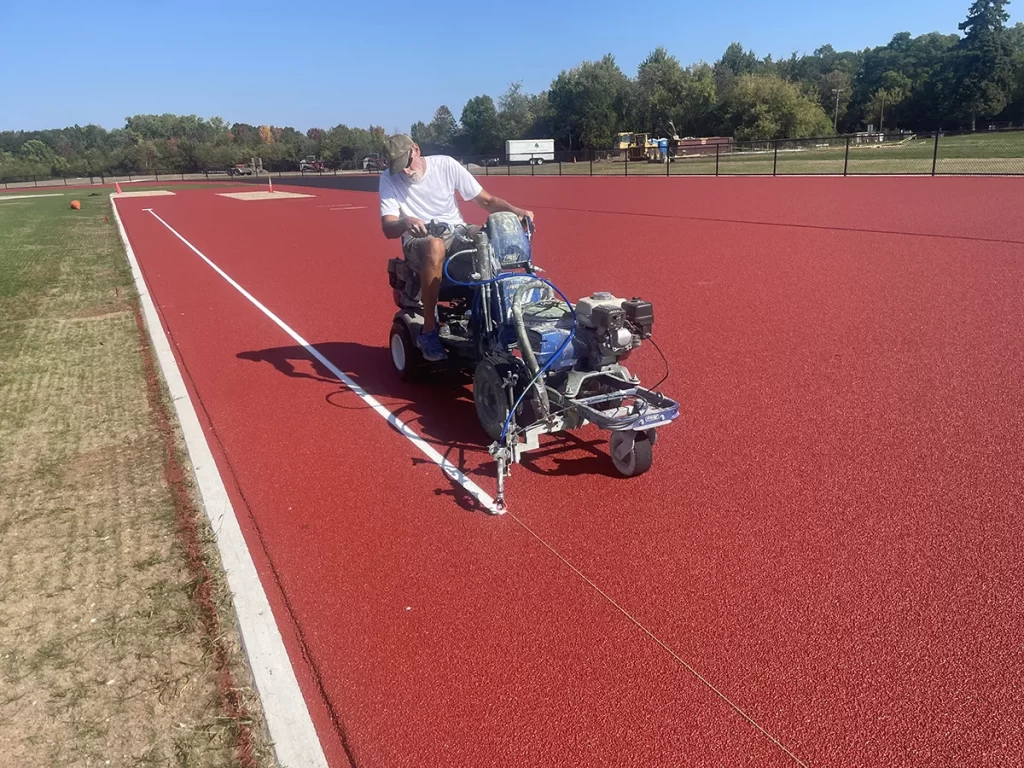Maintenance & Repair

Proper Track Maintenance for Longevity
Maintaining your running track is essential for ensuring its longevity and optimal performance. Vehicular traffic should be strictly prohibited, as the risk of leaking gas and oil, ground-in dirt, and stones can lead to track damage. Furthermore, tire twisting poses a threat to the track’s integrity. When equipment must cross the track, it should be done at a designated location, and the track surface should be protected using materials like indoor-outdoor carpet or our Turf Armor™ tarp. These protective coverings should not be left on the track continuously; rolling them up or removing them when not in use allows the track to breathe and prevents moisture buildup.
To prevent mud, dirt, and grass clippings from being tracked onto the surface, areas used for continuous crossings, including those frequented by football players wearing cleats, should be protected. It’s crucial to remove cross-over tarps when not in use. Additionally, proper adjustments to sprinkler heads are needed to prevent continuous watering of the track, as water elements can stain the track surface and accelerate natural weathering. Edging the track consistently and using a vegetation killer to eliminate vegetation around its edges is also essential to promote proper drainage. Lawn mowers should refrain from making turns on the track, and grass clippings should be discharged away from the track surface. Fertilizer should never be placed on the track. To ensure the longevity of your track, short spikes, like the 1/8-inch pyramid spike, should be used, while 1/4-inch spikes should be avoided, as they can penetrate the surface and lead to excessive wear. It’s also advisable to practice as much as possible in flats, encourage joggers to use outside lanes, alternate lane usage to distribute wear evenly, protect areas used by cheerleaders, and restrict the use of rollerblades, bicycles, and skateboards. The regular maintenance cycle for your Seal-Flex Track Surface depends on factors such as surface thickness, weather conditions, usage, drainage, and protective measures. With proper care, you can expect 7-10 years of use before additional applications of rubber and latex are required. Seal-Flex is known for its durability, and applying common-sense maintenance practices can further extend its longevity. Take-off boards should be stored away from the weather when not in use, and a wood filler board can be placed in the tray for added safety. Proper drainage is crucial to prevent water saturation, which can lead to the separation of rubber from the asphalt and premature wear. Ensuring proper drainage at all times is critical for the track’s exceptional long-term performance. In the event of track damage, most issues can be easily repaired. If you have any questions or need maintenance assistance, don’t hesitate to contact Current Surfaces. We’re here to help you maintain your track’s excellence.
